How safe a city is depends upon how safe a city feels.
In an era of rapid urban expansion, it is easy for poorly conceived transport infrastructure, mega-development and increased pedestrian flow to create ‘walls within cities’, dead zones, bottlenecks and dark places that are unwelcoming and unsafe. The national conversation in Australia is at a fever pitch regarding the safety of women, minority identities and children in public life, and it is imperative to consider the role art industry professionals can assume within a broader strategy of urgent urban improvement.
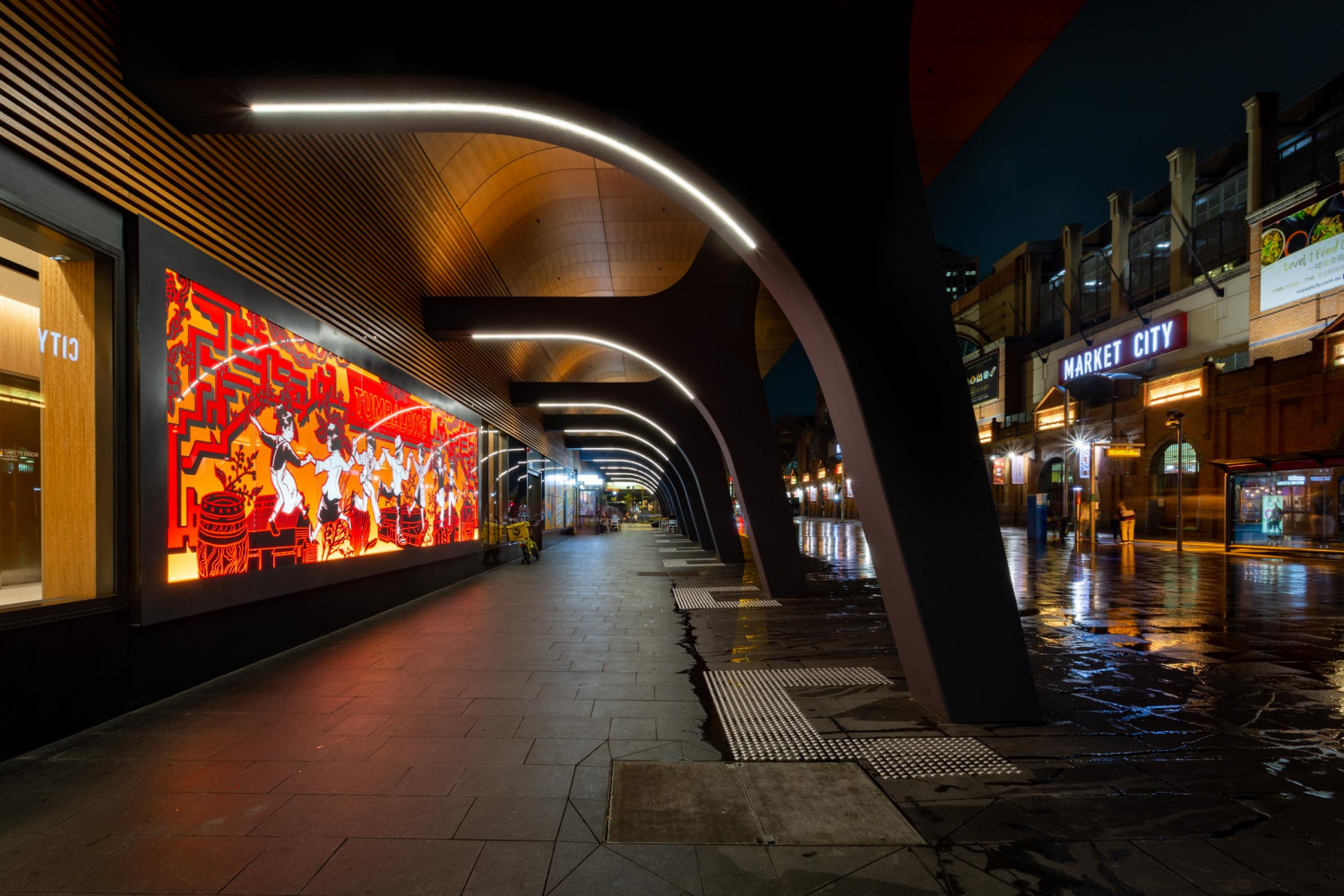
This article will examine the principles of public art as a mechanism for safety and community-building. It will further contemplate public art as an under-explored alternative to aggressive policing, institutional intervention or antisocial urban design, articulating how art processes can be used to develop accessible and welcoming public space.
An obvious synthesis of art and safety is found in public light art, which variously involves projected or sculptural works. Juxtaposing the banality of miscellaneous urban spaces, they prompt moments of contemplation and interaction. Light art increases circulation of people in display areas, activating dark alleyways, tunnels, transport thoroughfares, urban parks or ‘dead zones’ (e.g. street corners, miscellaneous storefront areas). Across day and night, light art can transform outdoor and indoor spaces (see the roaring success of Sydney’s ever-popular Vivid Light Festival) and create areas for rest and repose. As people pause, the spaces become more populated, making even more people want to congregate there. This can be further enhanced by incorporating digital technologies, like the vibrant and dynamic light box art piece “Tumbalong” in the Darling Quarter precinct, Sydney, Australia. Soundscapes can also enhance the multi-sensorial quality of a given work and improve positive user experience, with studies showing that sounds of nature and acoustic music often make people feel safer and more comfortable (Buxton et. al 2021).
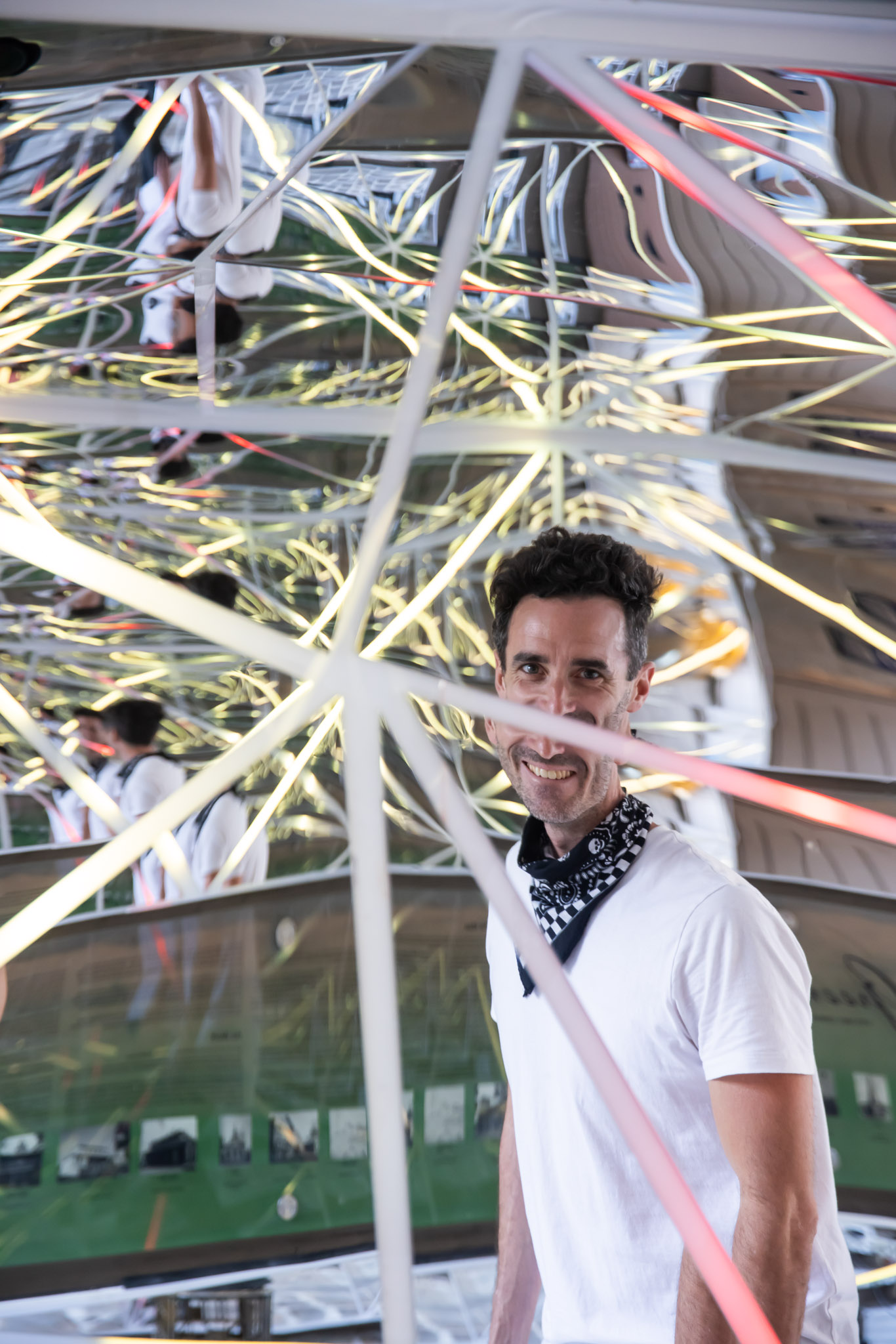
Burgeoning support for public art initiatives in Sydney has resulted in exciting light art projects across the city. Art Pharmacy worked with several local artists on a series of activations in the Rocks in 2023, including Vincent Burret’s ‘Enlightened Reflections’. Along Greenway Lane in Sydney’s oldest suburb, a contemporary interplay of mirrored triangles and colours framed the entry to an old sandstone laneway, representing the distinct character of this area. The reflection of natural light combined with the artificial neon lighting brightened the path of users of the space, inviting passers-by to enter, become the centre of it and take time to wander through. Around the corner, you could also find Saltwater Country, a collaborative artwork between Goldberg Aberline Studio (GAS) and Graham Toomey, an Indigenous artist of the Wurrumunga Clan of the Wiradjuri and Wongaibon nations. GAS is based in Sydney yet cultivates an international practice with their unique fabric-based sculptural works. The lantern shapes of the work dotting the laneways of the Rocks brought natural and Indigenous artistic motifs to an area that is arguably the genesis point of Australian colonial urban life. Public art of this kind recognises that people do not experience city spaces similarly and that different areas hold connotations for groups, be this along racial, cultural, gendered or ability-based lines. Where one person may feel safe or entirely neutral, others may experience fear, discomfort or anxiety. Light art uses artistic forms to transform and elevate urban spaces, remedying the ordinary, tiring and destabilising experiences of insecurity people feel when they are out and about.
These impermanent, colourful art projects create a sense of everyday joy among urban dwellers. Perhaps not as quantifiable as reducing crime rates or ameliorating socio-political inequality, there is still extraordinary benefit to alleviating common stressors that a dark alleyway or empty street can represent by incorporating public art in such spaces.
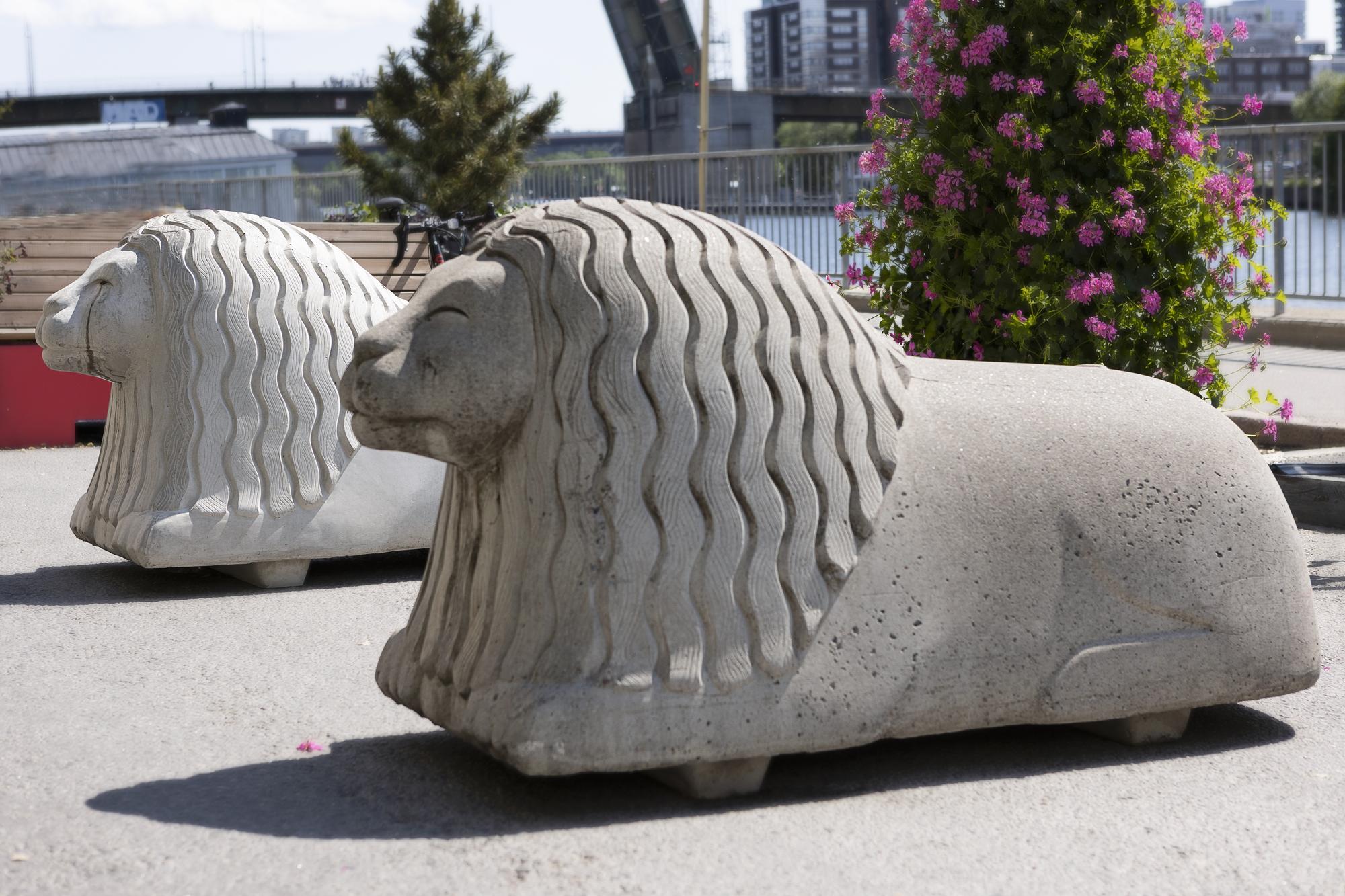
Public policy benefit
Concerted investment in light and sound art in public spaces fulfils an underlying public policy interest in eliminating “groups and behaviours associated with insecurity” (Svanelid 2023, 149).
Insecurity, as a term here, combines technical (low light, poor visibility) and social components (potential for criminal or harassing activity; the presence of people sleeping rough). By improving lighting in these areas, art is proffered by local councils and governments as a way to remove and exclude the social elements that give rise to insecurity and a sense of it in those areas. Further, light art actualises what the architectural theorist Jane Jacobs in the 1960s called “natural surveillance”, drawing on Michel Foucault’s linking of group discipline and surveillance (Jacobs 2011). Rather than funding more policing initiatives, Jacobs argued that cities could prevent crime and regenerate urban spaces just as effectively by creating environments where people were aware their behaviour was visible. This means public light art can be considered strategically crucial for creating a better and safer monitored urban landscape – while also bringing aesthetic engagement and wonder to previously mundane space.
Public art can also be used to make physical alterations to urban environments in the interest of safety. An international example can be found in Anders Årfelt’s Stockholmslejon (Stockholm Lions), which have stood guard at Drottninggatan in Stockholm since 1995. The works were created before visions of safety/security began to feature more frequently in municipal public art policy documents, making them veritable pioneers in the field this article addresses. The 30 lion sculptures are strategically placed at street intersections and act as roadblocks to control traffic and demarcate pedestrian zones in central Stockholm. Their design draws on the lion on the Swedish coat of arms, and the organic, curved lines of their bodies and manes contrast pleasingly with the hard, angular streetscape. Lions are a longstanding feature of design historically used in kingdoms, states and noble houses across Europe, representing courage, strength and stoicism in the face of adversity. They are featured extensively in classical architecture, gargoyle design, and public monuments across the continent. In Stockholm, children often play and climb on the lions around the city, and there is a fond sense of community support for the sculptural characters.
The Lions assumed a shockingly different role in 2017 when a terrorist drove a stolen truck through Drottninggatan, killing five people and injuring many more. News images of the attack showed a lion sculpture rammed against the front of the truck as it sped down the thoroughfare. The lion quickly became a symbolic hero of the day, celebrated for its role in slowing the truck. Following the attack, the lions were adorned with flowers, teddy bears and messages of love – they became a physical beacon of community solidarity amongst the tension and trauma of those urban spaces. Ethnologist Billy Ehn describes their transformation as a kind of ‘spontaneous memorial’, or a public altar where the public came to find comfort and intimacy after the attack (Ehn 2007). The City of Stockholm later seized upon the iconography of the lions to expand the use of public art as a security/safety measure in the city through the Lions XL project, which saw a three-fold increase in the number of lions ‘guarding’ central Stockholm streets, 70 of the old format and 20 of a larger size, weighing 4 tonnes each. More streets are now blocked off by the Lions to reclaim and protect the area from any possible repeat of 2017’s atrocity.
While the physical forms of the lions were not specifically notated or marked to reference the terrorist act, they have now become a rather dialectical symbol of remembrance and progress. Lions XL results from the political will to restore public safety through art and enhance security beyond what existed before. As terrorism remains a public safety concern, it is interesting to consider how the artistic ornamentation of a city can also meet prominent public policy objectives.
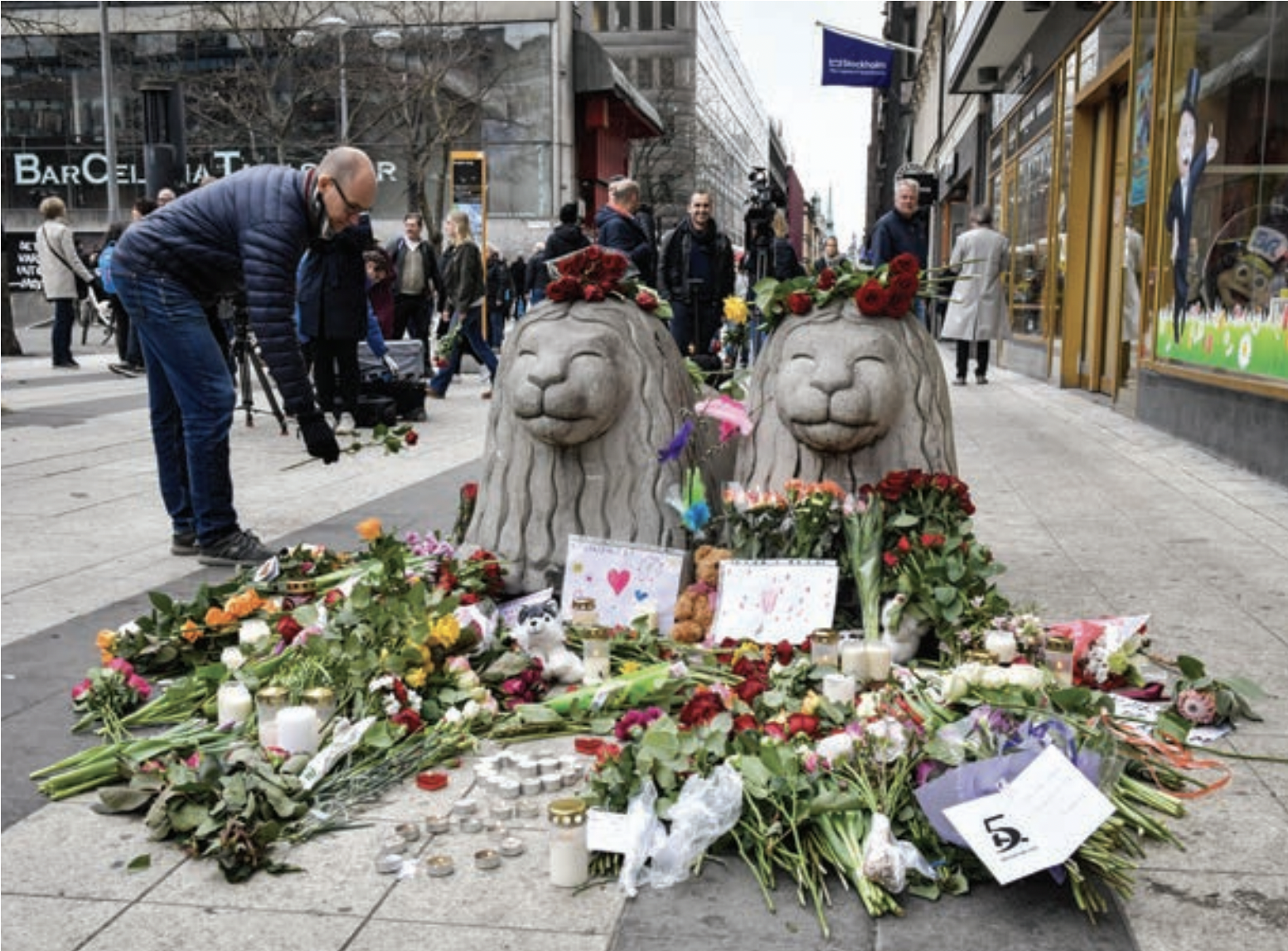
For these benefits to be fully realised, implementing public arts programming must be done with an active regard for gender, racial and class dynamics.
The art historian Grant Kester argues that public art, by its reflective and interactive practice and subject matter, is an excellent design mechanism through which communities can engage with social and political realities around them. This forms part of the broader philosophy of ‘placemaking’, which has become a highly popular term to capture institutional and community approaches to improving urban vitality and promoting people’s health, happiness, and well-being.
Based on Kester’s broad thesis, performance researcher Sarah Wilbur argues that placemaking opportunities are particularly successful when they engage socio-politically active artists and targeted community participants (e.g. local creators who understand the dynamics of individual communities and groups). In concrete terms, while ‘placemaking’ as a government policy goal can seem abstract and disconnected from a city’s everyday struggles, placemaking creates opportunities for diverse artistic voices to present their works and channel the lived experiences embodied in a given place into the public art featured there.
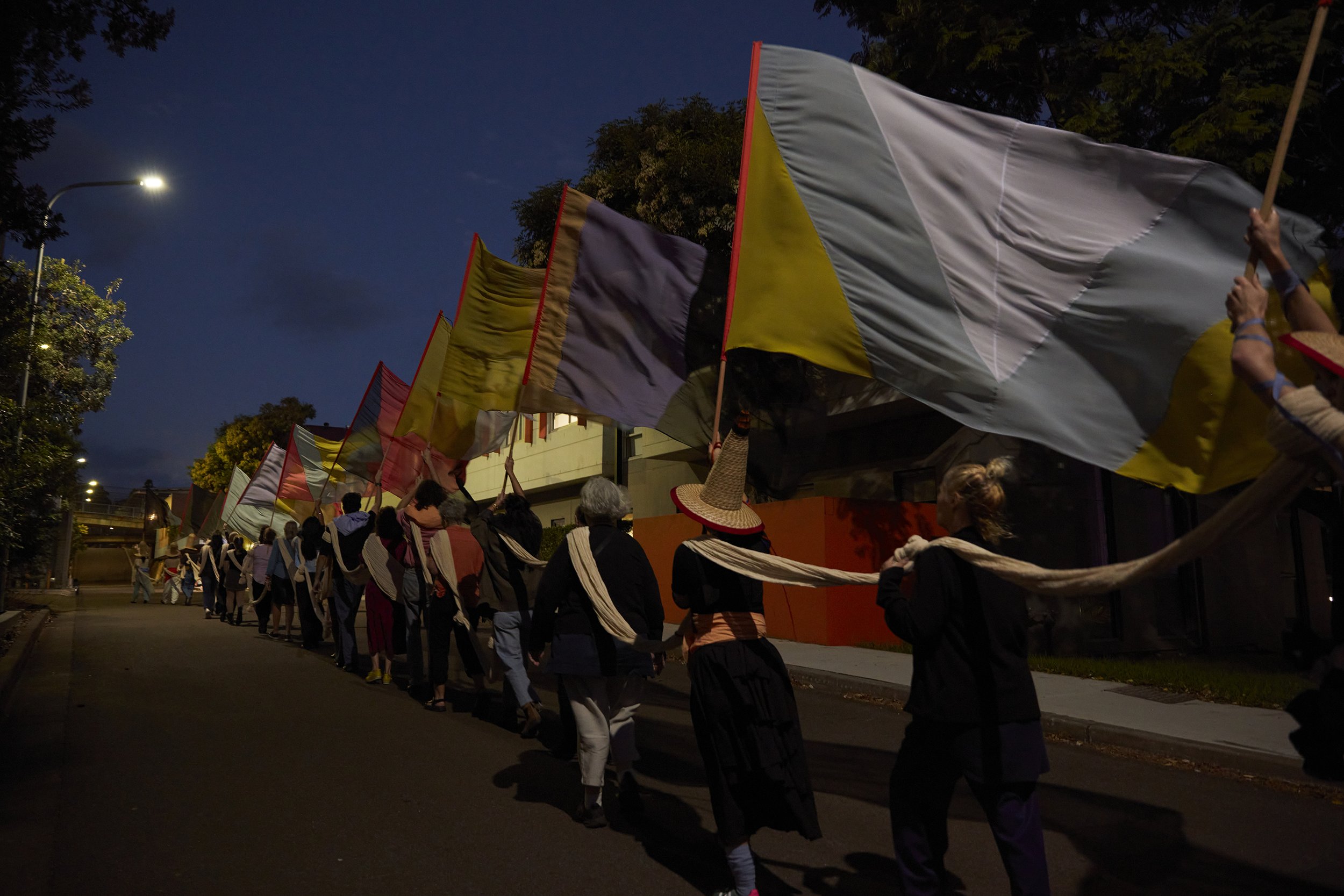
By way of a local example, Safer Cities: Her Way is a collaborative partnership program between Transport for NSW and several pilot councils across NSW. TfNSW describes that “the program will deliver demonstration projects aimed at improving the perception of safety for women, girls and gender diverse people when walking or moving to, through and within public spaces and transport hubs”. This includes art installations, improved lighting and more help points. There is huge scope here for women and gender-diverse creators to take control of design and implementation processes, particularly as the program is still in its infancy and will involve many projects over multiple council areas. As with the Art Pharmacy project in the Rocks mentioned above, the TfNSW program recognises that art can be harnessed to realise public safety concerns, regenerate ‘dead’ urban zones and build a sense of recognition of the different ways people, like those in the queer community, experience city areas.
Urban cultural policy that uses art as an improver of public space and safety instrument is founded upon recognising that art can do good, making better people and improving spaces. It may assuage the need for more policing, create welcoming and activated thoroughfares and generate incidental artistic encounters that bring wonder and inspiration into the everyday.
This should be done with a sensitive and critical eye, aware of the social dynamics of any space in which public art is inserted, allowing for collaboration with and creation by minority groups to reflect the diversity of a given person’s experience in the city.
Article by Lauren Lancaster.

